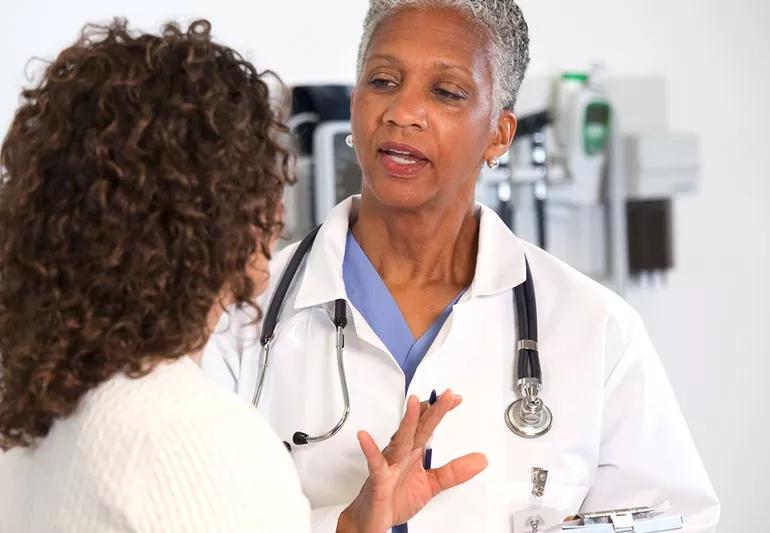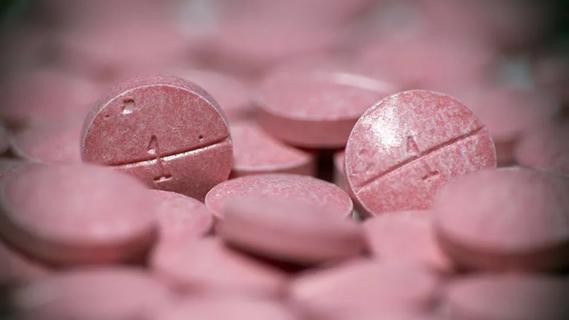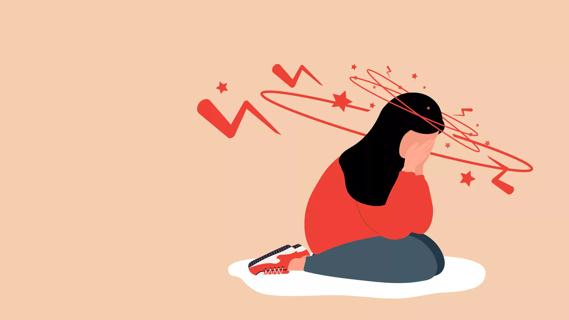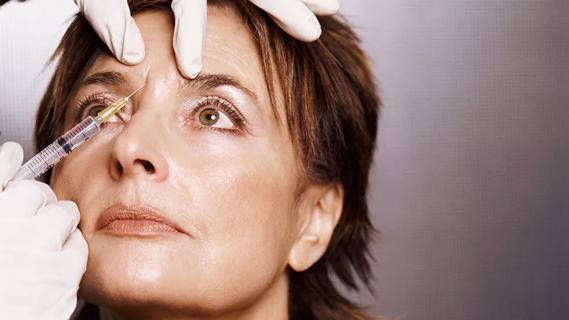A painful, swollen abdomen from endometriosis may be managed with dietary changes

Endo belly is a severely bloated abdomen common in people with endometriosis. Some people say their swelling gets so bad, they look like they’re pregnant.
Advertisement
Cleveland Clinic is a non-profit academic medical center. Advertising on our site helps support our mission. We do not endorse non-Cleveland Clinic products or services. Policy
“People with endometriosis often have symptoms for years before receiving an accurate diagnosis,” says women’s health specialist Megan Billow, DO. “We’re seeing a greater awareness of endo belly these days. Patients even bring in photos to document their symptoms.”
Endo belly is a buildup of inflammation and gas inside the abdomen. It typically occurs before or during your period (menstruation).
The main endo belly symptom is a painful, swollen abdomen. Gastrointestinal symptoms, such as constipation, diarrhea and nausea, are also common.
Endo belly can mimic other gastrointestinal (GI) conditions, such as:
From a diagnostic standpoint, “either/or” isn’t a super helpful way to think about endo belly. When it comes to GI problems, you may be facing a “both/and” situation.
“You can have endometriosis plus another gastrointestinal condition, such as irritable bowel syndrome,” states Dr. Billow, adding, “It’s important for your provider to ask you about your medical history and when the symptoms occur. That information really helps us tease out the diagnosis.”
Endometriosis causes endo belly. In endometriosis, cells similar to the lining of your uterus grow in other areas of your pelvis, abdomen or chest. During your menstrual cycle, these cells and the nearby organs and tissues become inflamed.
Advertisement
“Inflammation can cause the swelling we see in endo belly,” explains Dr. Billow. “Endometriosis can also irritate or block the intestines, causing constipation, gas and bloating. In endo belly, both processes are probably causing the abdomen to bulge out.”
In addition to endo belly, symptoms of endometriosis include period pain, painful sex and trouble getting pregnant.
You can also develop endometriosis pain in your back, side, chest or neck.
Most people can find relief from endo belly. Dietary changes are a good place to start, but if you still experience symptoms after adjusting the way you eat, talk to your healthcare provider.
“Medication and surgery are often the best options since they help treat the underlying cause of endo belly — endometriosis,” Dr. Billow notes.
Treatment options for endo belly include:
There’s a close relationship between inflammation, estrogen and endometriosis: Inflammation and high estrogen levels stimulate endometriosis.
An anti-inflammatory endometriosis diet emphasizes foods that reduce inflammation and estrogen. For example:
Foods to avoid if you have endometriosis include:
Another strategy to improve endo belly is the FODMAP diet. FODMAPs are foods known to cause digestive problems. Initially, you cut out all possible FODMAPs. Then, you slowly add foods back to your diet.
Dr. Billow recommends working with a nutritionist to help you identify foods that worsen your endo belly symptoms. She also recommends a daily stool softener to help prevent constipation.
Medications help manage endometriosis and endo belly by suppressing estrogen. Healthcare providers use two main types of medications:
Your provider may also prescribe nonsteroidal anti-inflammatory drugs (NSAIDs) to reduce inflammation and pain.
If dietary changes and medication aren’t working, surgery is the next step. “We typically use a minimally invasive laparoscopic approach,” says Dr. Billow.
Advertisement
During laparoscopy:
Surgery may include removing your uterus (hysterectomy), ovaries (oophorectomy) or part of your bladder or bowel. The extent of surgery depends on your pain and whether you want to have children.
“Preserving fertility for people who want children is an essential part of endometriosis treatment,” says Dr. Billow.
Other treatments may relieve pain and help you cope with your symptoms. Some popular therapies include:
Endo belly may last for a few days or weeks. It depends on how much endometriosis there is and whether it’s affecting your intestines directly.
Your provider can help you find the right balance of dietary, medical and complementary treatments to help. By working together, you can find lasting relief.
Advertisement
Learn more about our editorial process.
Advertisement

Bleeding is a risk and warrants taking care, but the reward of this lifesaving medication is great

Severe and debilitating headaches can affect the quality of your child’s life

With repeat injections over time, you may be able to slow the development of new wrinkles

Although it can be alarming, it’s normal to experience blood clots during menstruation

Stretch before heading outside, keep proper form and avoid jerking or twisting to throw snow

Type 2 diabetes isn’t inevitable with these dietary changes

Applying a hot or cold compress can help with pain